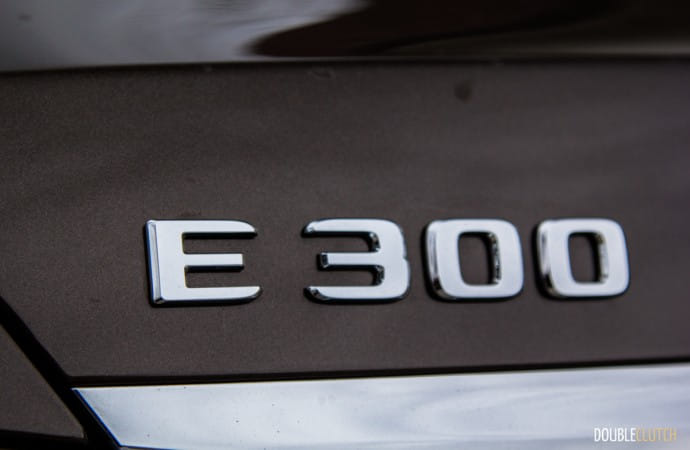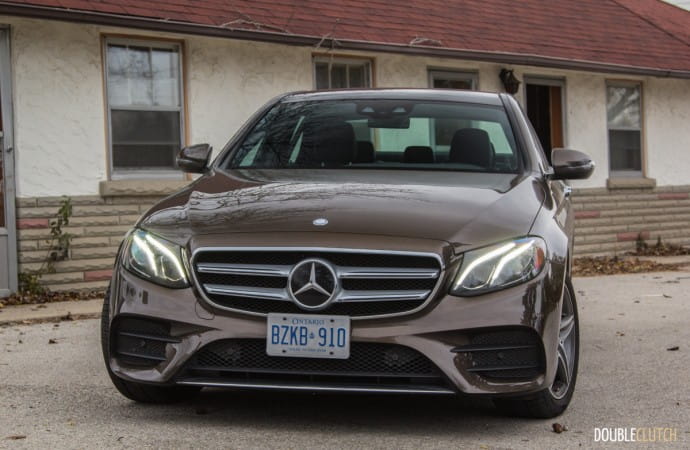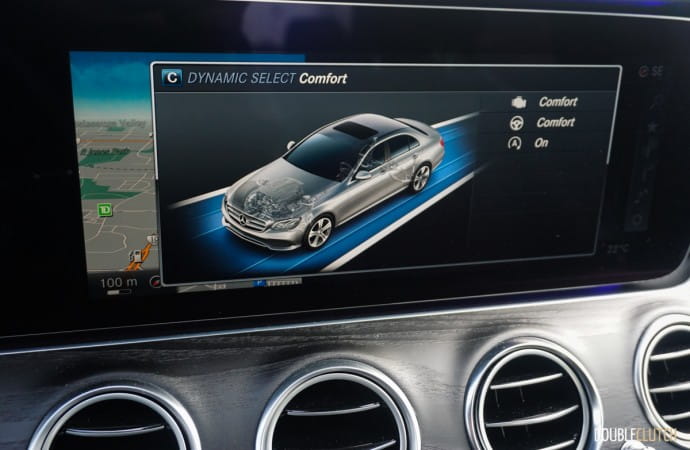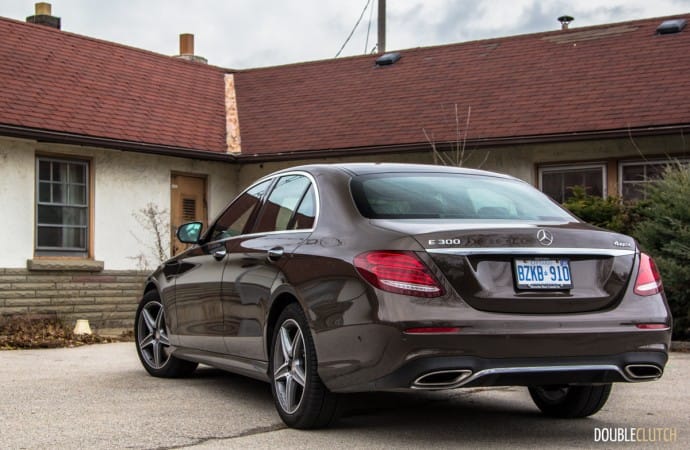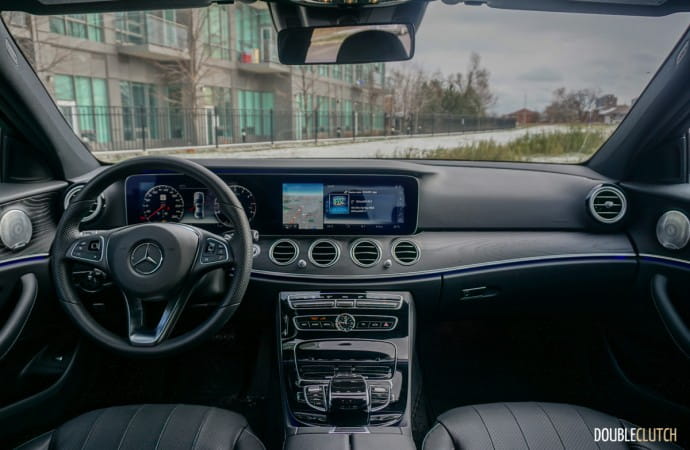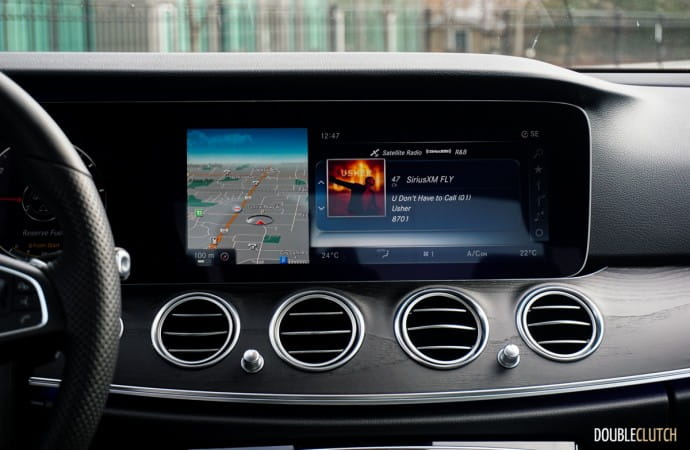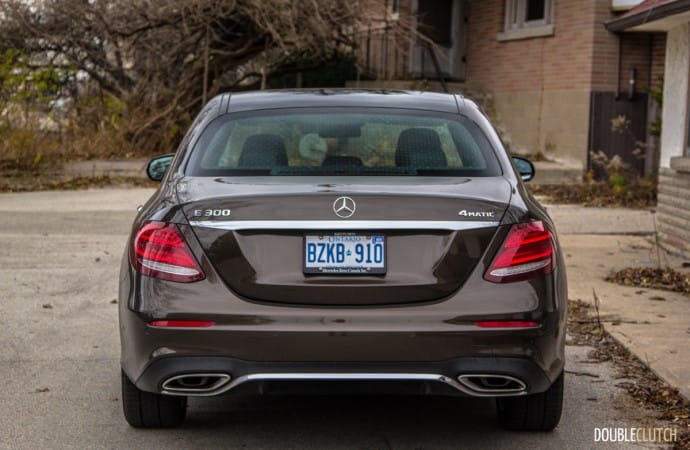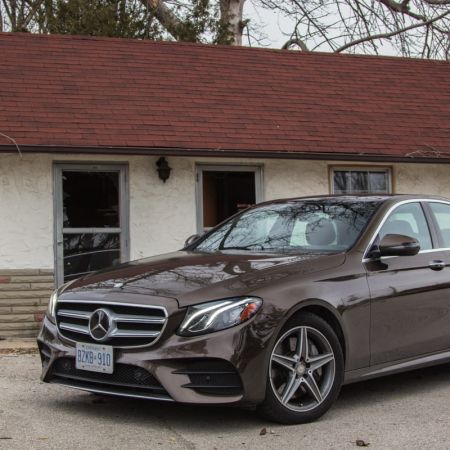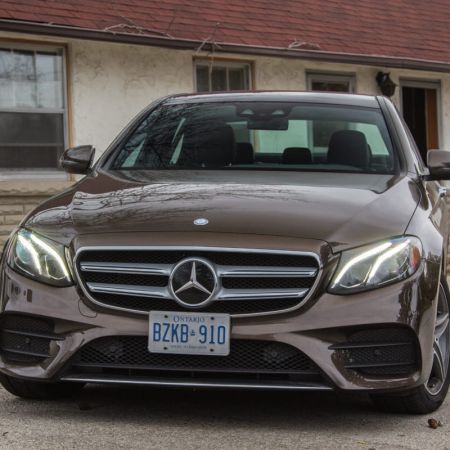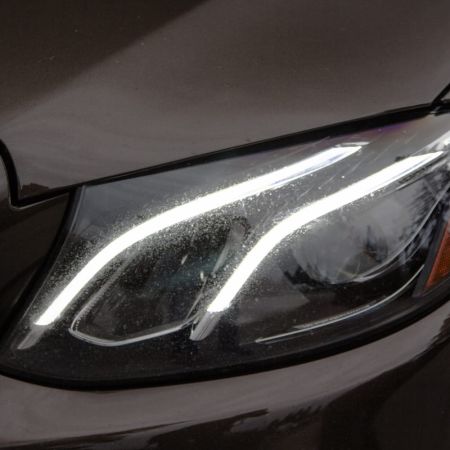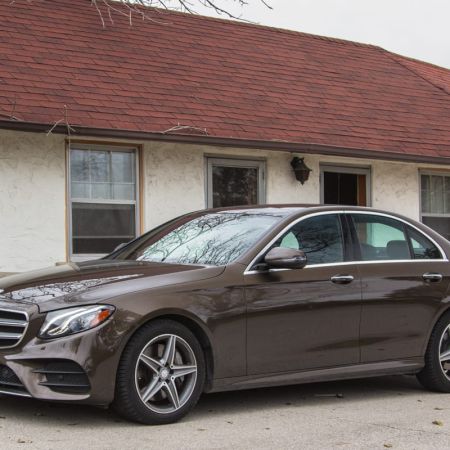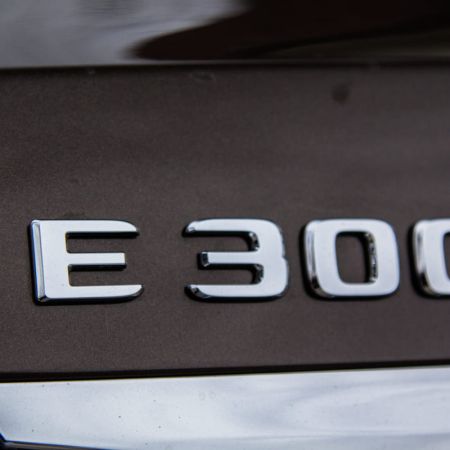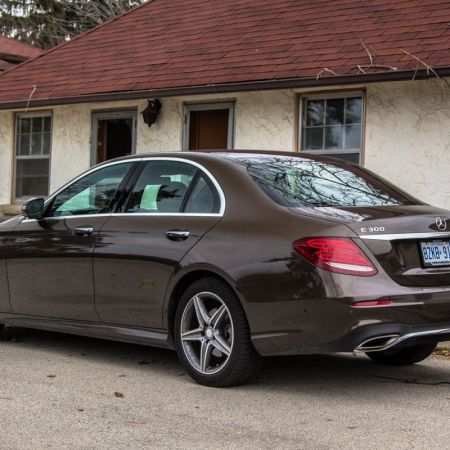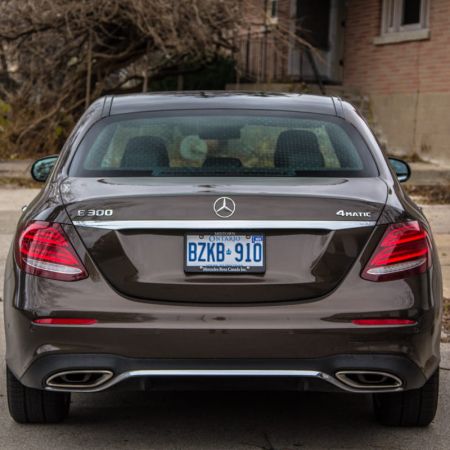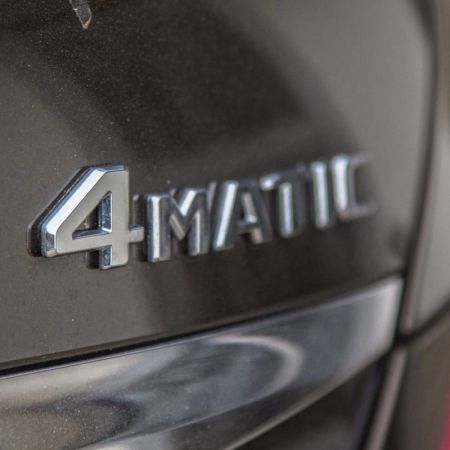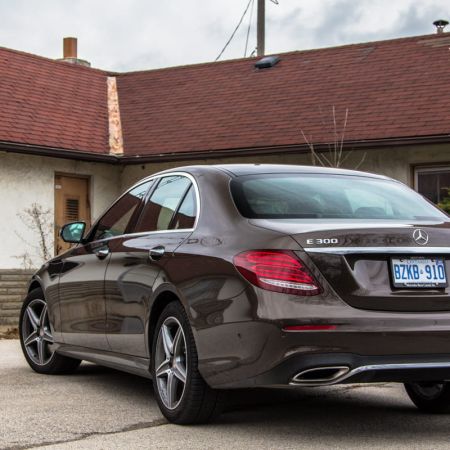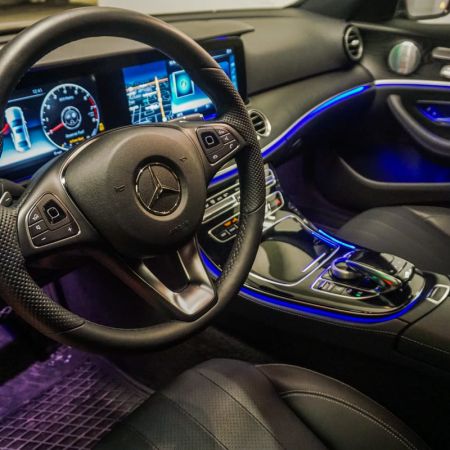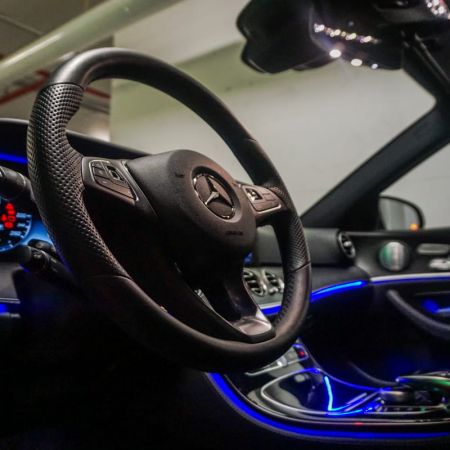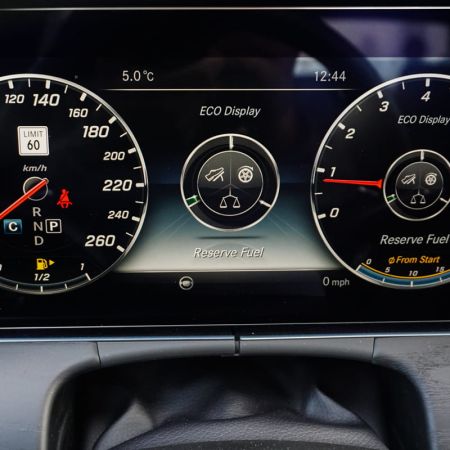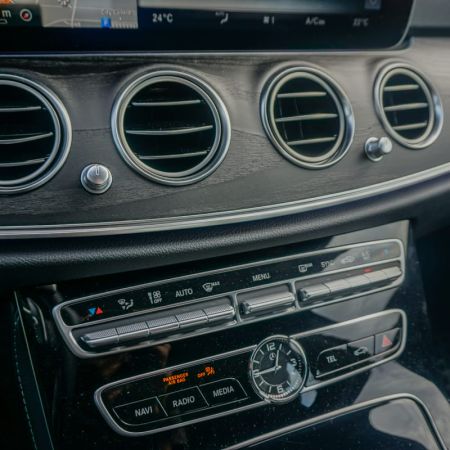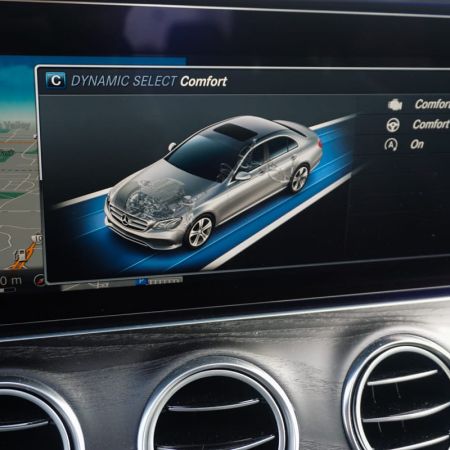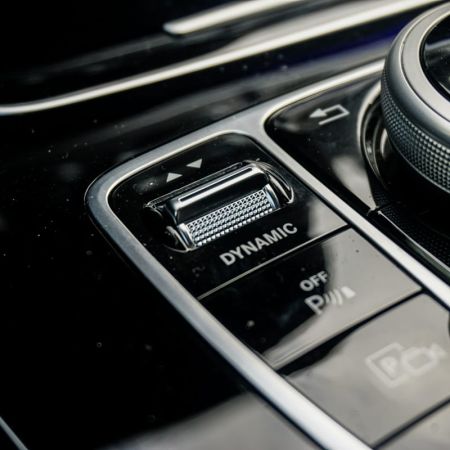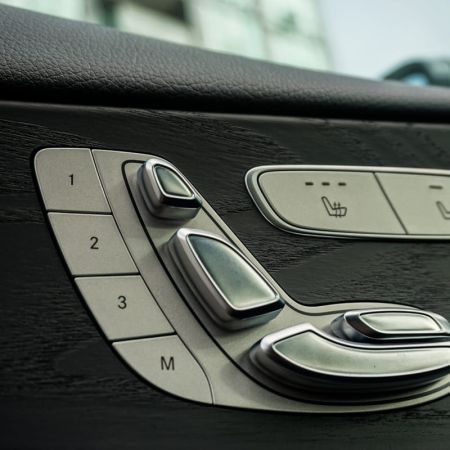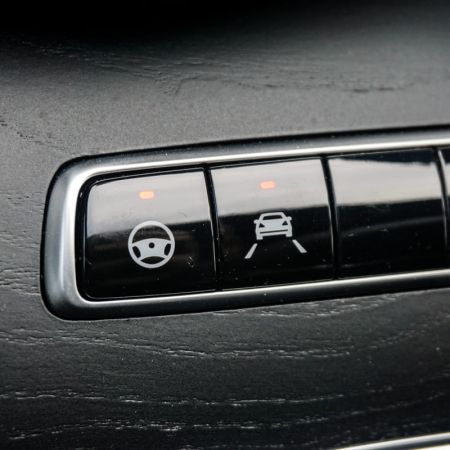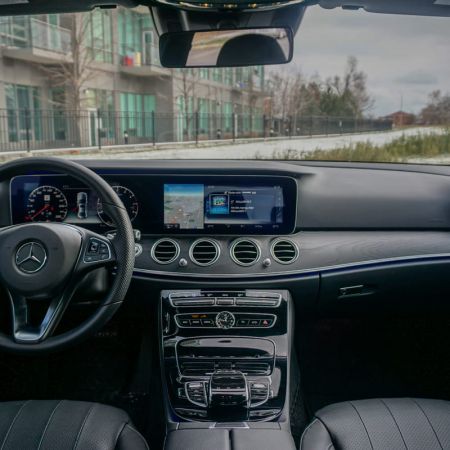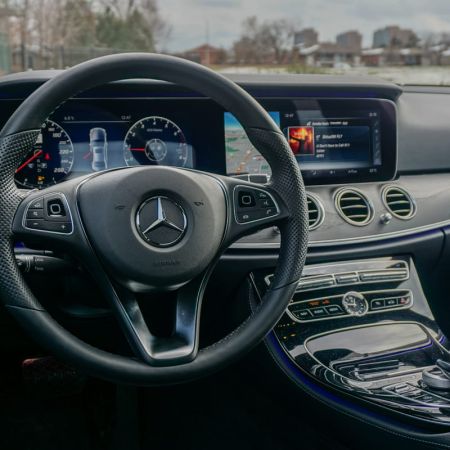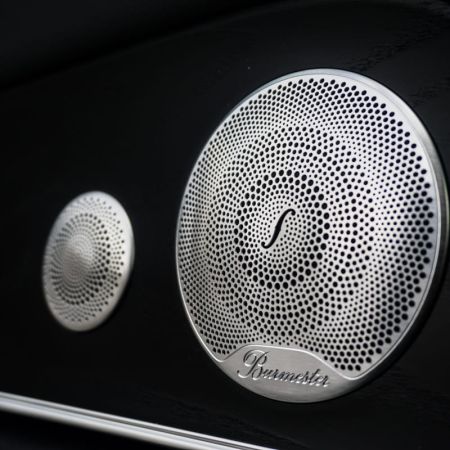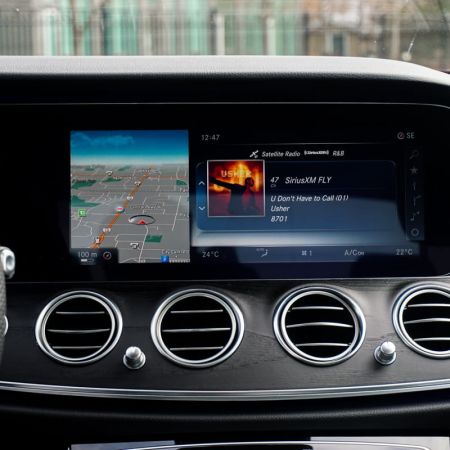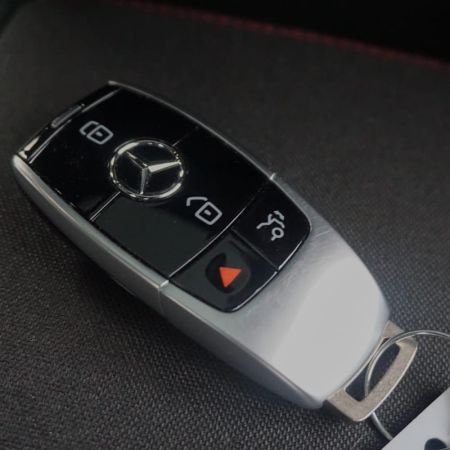Roughly every six to seven years, Mercedes-Benz reveals a full redesign of the C, E, and S-Class models. The S-Class has long since established itself as a pioneer in technology, safety, and luxury, setting new benchmarks with each new iteration. It’s a large car though, and an expensive one – only the elite can afford a brand-new S-Class or even require a car of that caliber. Enter the E-Class; the choice luxury vehicle for the successful everyman. Case in point – my own father has been exclusively driving the E-Class since he turned 50, and will only be cycling into the future models of the same vehicle.
The year 2017 marks a shift – the S-Class debuted in 2014 with plenty of new technologies, but the E-Class was due for an update. This latest model, bearing the chassis code W213, is a development that truly redefines the mid-size luxury sedan segment. We were sent a 2017 Mercedes-Benz E 300 4MATIC, equipped in the same manner that we anticipate many buyers to spec their vehicles, for a weeklong evaluation. After we had initially driven the new E-Class at a media event, it was eligible for our “Best Luxury Car” award, and we have now announced it as our winner of the trophy.
From a design standpoint, the W213 E-Class is exactly what we expected. The latest S and C-Class vehicles (reviewed here) represent the latest Mercedes-Benz design language, and now the E-Class has adopted it as well. The car looks like a larger C-Class, and that’s not a bad thing. Though arguably more conservative than the W212 car it replaces (reviewed here), it’s a well-proportioned design with a more modern and potentially more timeless look. The E-Class differentiates itself with its more prominent side profile and larger overall size. The wavy LED daytime running lights look sharp, complimented by the 18” AMG wheels equipped here.
The E 300 sits at the bottom of the E-Class lineup, below the E 400, AMG E 43 and forthcoming AMG E 63 models. All Canadian E-Class’ are equipped with 4MATIC all-wheel-drive. Don’t be fooled though – this E 300 does not look, feel, or drive like an entry-level car. The E 300 gives up its six-cylinder motor for a 2.0L turbocharged and direct-injected inline four-cylinder. It pushes out 241 horsepower at 5,500RPM and 273 lb-ft of torque at just 1,300RPM. The car can sprint to 100 km/h in 6.7 seconds, which isn’t slow by any means. I’ll even go as far as to say that the Mercedes-Benz turbo-four is by far one of the best in the segment, easily demolishing BMW’s N20 “28i”-series motor in both refinement and noise.
The E-Class doesn’t sound like a four-cylinder either, and the vast majority of buyers won’t even be able to tell that it’s not a six. It’s impeccably smooth, and feels exactly like, a mid-sized Mercedes-Benz should. The 9G-Tronic nine-speed automatic transmission keeps revs low at highway speeds, and is never hunting for gears. Power delivery is smooth, the torque curve is linear, and turbocharger lag is almost non-existent. It feels considerably lighter and more nimble than the outgoing model, which felt quite heavy in comparison. Steering is effortless, and the crisp damping helps the car handle sharply.
Vehicles not spec’d with the optional AirMatic air suspension, such as our tester, get a steel-sprung suspension setup with adaptive electronic damping. It’s not adjustable at the touch of a button, but the system adapts to environments and stiffens up when cornering, ensuring minimal body roll. Out on the open road, the car is comfortably damped, though it doesn’t wallow at all. I found the E 300 to be a bit more planted than the Volvo S90 (reviewed here) when absorbing potholes, though the two are quite even in most environments. The base setup is a more economical and practical alternative to AirMatic, which may result in expensive out-of-warranty fixes down the road should it fail.
What’s most interesting is the full Drive Pilot technology, a full suite of safety and drive-assist features that take the next step towards a fully autonomous car. It incorporates radar, camera, and sensors to maintain appropriate distance from the vehicle ahead, detect obstacles, and steer the car into your lane. It allows for up to 60 seconds of autonomous driving before asking for steering input from the driver. Where other vehicles’ lane keep assist systems almost cause “bouncing” or what I like to call a “Pong effect” between lane markers, the E 300 stays centered, and even holds the car on curves. Drive Pilot also functions in traffic, letting the car stop and go automatically without any driver input.
One of the biggest comparisons that can be made here is with Tesla’s AutoPilot technology (reviewed here). While doing very similar things, the Mercedes-Benz system, though brand new, is smoother in overall operation. We observed jerkiness with the Tesla, along with abrupt braking and too-fast acceleration, the system almost operating in an on/off manner that feels way too computerized. Mercedes-Benz’s technology may not be as confident (Tesla doesn’t have this 60 second override requirement), but it feels far more natural in operation and also requires less explanation.
Apart from the semi-autonomous technology, the E-Class also packs a full safety suite as expected for a luxury (or even a mainstream) vehicle sold today. It goes without saying that Mercedes-Benz’s main priority is safety, and it shows. Even the lane departure technology is smart – when the car veers out of its lane into another lane, the steering wheel vibrates to warn you. However, if the car is veering into an oncoming traffic lane or a shoulder, the brakes are actually applied lightly and a more severe warning is displayed – it can actually tell the difference! Forward collision warning, cross traffic alert, and adaptive cruise control (Distronic Plus) are also available.
Quite possibly the best part of the new E-Class isn’t the way it drives – it’s the interior. The first thing you notice upon getting into the driver’s seat is the 12.3” center display that controls the COMAND infotainment system. Just to the left of it, right in front of the driver is yet another 12.3” high-resolution display, this one functioning as the instrument cluster. Everything is customizable with various skins and displays, offering all pertinent information in brilliant high resolution. There’s a rotary dial controller along with a touchpad to control the main COMAND stuff, which also features Apple CarPlay and plenty of smart apps. At night, the ambient lighting can be configured in quite literally any colour, and it makes the cabin feel special in a non-artificial way.
Interior quality overall is spectacular; easily best in segment, followed closely by the Volvo S90. The black Artico leather seats are power adjustable and feel durable, all ergonomics are excellent and fit/finish is right up to the Mercedes-Benz standard. The dark ash open-pore wood trim looks good and resists dirt and fingerprints. The center console has some piano black finish that appears okay, but is prone to scratches and prints. We’d like to see open-pore wood here. The panoramic sunroof has a power-retracting shade and brings lots of light into the car, giving it an airy feel.
Pricing for the 2017 E-Class starts at $61,200 for the E 300, while the forthcoming E 400 starts at $69,400. Already well-equipped, Mercedes-Benz anticipates that most buyers will check off the box for the $5,100 Premium Package, which adds a power trunk closer, hands-free access with Keyless Go, 12.3” instrument cluster display, heated steering wheel, panoramic sunroof, Burmester premium sound, a reverse camera, and park assist. Our car also had the Intelligent Drive Package, which adds the semi-autonomous technology. Lastly, the Mercedes-Benz corporate key fob has finally been replaced with a new unit. Surprisingly affordable, this nearly loaded E 300 4MATIC came in below the $70,000 mark at $69,800 as tested.
In the fuel efficiency department, the shift from a six-cylinder to a turbo-four shows off its benefits. The E 300 is rated for 10.8L/100km in the city and 8.1L/100km on the highway. Despite very cold winter temperatures and winter-blend premium fuel, we still managed to pull off 9.4L/100km in a combined cycle. We observed closer to 8.4L/100km on exclusively highway commuting, as well. The 66L fuel tank is a generous size, and the E-Class requires 91-octane premium. Mercedes-Benz has also included an “Eco” mode on the Dynamic Agility Select that adjusts throttle response and shift points for maximum efficiency.
This 2017 Mercedes-Benz E 300 4MATIC is the face of the new breed of luxury sedans. With the new Volvo S90 and forthcoming BMW 5-series, this is a great time to be shopping within this segment, because there’s no real poor choice. The E-Class is a global vehicle that has hundreds of thousands of loyal buyers, and this new one will be attracting many more. With the AMG models in the line, upcoming option of a plug-in hybrid, and next year’s coupé, convertible and estate models, there’s an E-Class for every type of buyer. The W213 model sets a new standard for luxury motoring, and we can’t wait to see more of them populating our roads.

